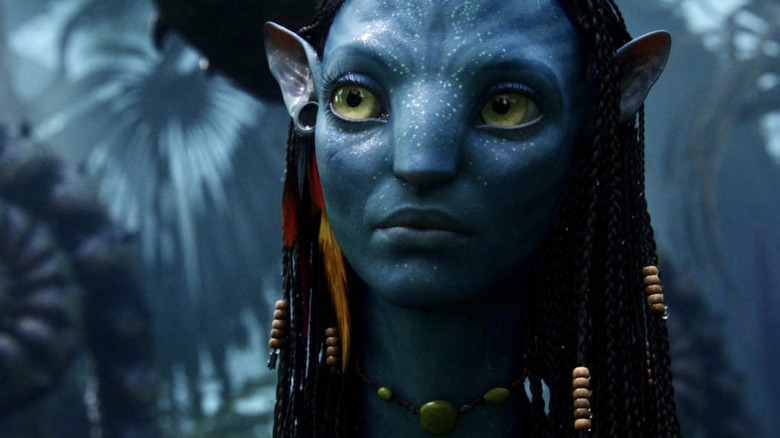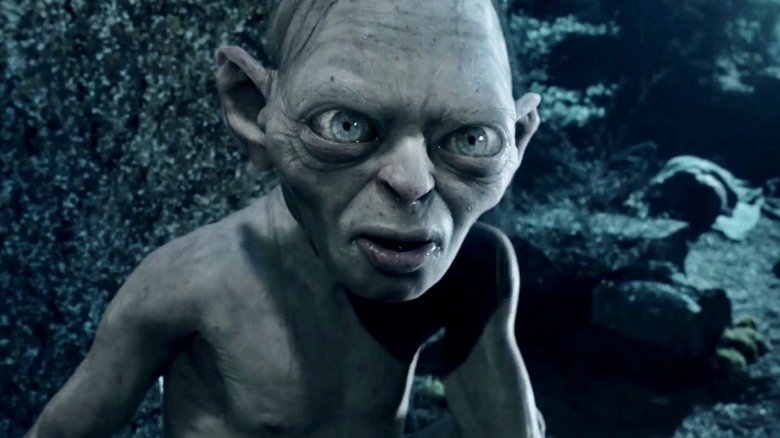Photo-Realism Wasn't James Cameron's Goal For The Characters Of Avatar
After 13 years, "Avatar: The Way of Water" is finally upon us, and moviegoers are once again headed back into the world of Pandora. The first "Avatar" film was praised for its Oscar-winning cinematography and the photo-realistic backgrounds that brought the flora and fauna and floating mountains of the Pandora planet to life. Slightly more polarizing was the look of the feline blue aliens the Na'vi, with some drawing joking comparisons between them and the Smurfs. To hear writer, director, and co-producer James Cameron tell it, though, the Na'vi were never meant to be photo-realistic in the way that Pandora's lush environments were.
In a 2009 interview with Kinowetter to promote the first "Avatar," Cameron discussed his aim for characters like Zoe Saldana's Neytiri and Sam Worthington's Jake Sully in his Na'vi form. For Cameron, it was more important to create believable characters that conveyed the actors' facial expressions. As he put it:
"I don't know if we achieved 'photo-reality', whatever that is, but I do think we've achieved character reality. I think when you watch the movie, Neytiri is a real person, even though she's an alien. I think that the performance Zoe Saldana gave to the movie is exactly preserved in her CG character, and I think the same thing with Sam Worthington's Avatar character, Sigourney Weaver's Avatar, and the other characters amongst the Na'vi clan. I think they're real, I think they're real people. And that was our biggest challenge, and that's what took so long to do, because it hadn't been done before. We'd seen examples of performance capture that were intriguing visually, but there was something missing, you know, from the face."
Performance capture vs. motion capture
When Cameron talks about how good, high-level performance capture "hadn't been done before," it's important to make a distinction between that and motion capture. Prior to "Avatar," Andy Serkis, for instance, had already brought to life very convincing motion capture characters in "The Lord of the Rings: The Two Towers," its sequel, "The Return of the King," and Peter Jackson's "King Kong." Yet Gollum, the "Lord of the Rings" character Serkis played, had a face that was rendered through CGI. Visual effects company Weta Digital, which also worked with Cameron on "Avatar," used rotoscoping and animation to add Gollum's face, with Serkis serving as a model and providing the character's voice and body movements.
For some viewers, the overall look of the Na'vi and their gangly limbs in "Avatar" might still go to show that realistic humanoid CG characters are a form of unobtainium that can never be mined from anywhere but the uncanny valley. Whatever else you think about the design of the Na'vi, however, there's no denying that Zoe Saldana, for one, makes Neytiri a believable character, thanks in part to technology that allowed the full range of her emotions to shine through. Whatever else it is, "Avatar" was a big step forward in enabling the actors behind digital characters to give performances that wouldn't get lost in translation from set to screen.

